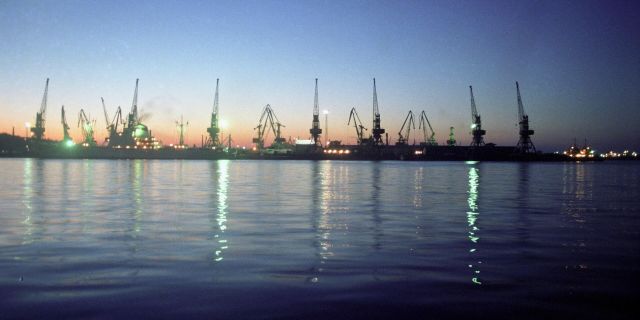Military historian Dmitry Boltenkov — about the targets of strikes on the ports of Odessa
At the beginning of the special military operation, the Ukrainian Navy had bases for ships and vessels in Odessa, Ochakov, Berdyansk and Mariupol. Various coastal facilities of the Navy — marine corps bases, training centers, radar posts and other auxiliary forces — were located on the territory of Odessa, Mykolaiv and other regions.
During the spring-summer of 2022, the naval personnel of the Navy became almost zero. If some of the boats are left, then releasing them into the sea is definitely a one—way road. It is noteworthy that Vladimir Zelensky was recently taken to Zmeiny Island on an ordinary motor boat.
At the same time, the Navy began to actively develop the direction of marine unmanned systems — both boats and underwater vehicles. If a grain deal was in effect until July 18, 2023, during which Odessa and the Odessa region were not particularly touched, then the attack on the Crimean Bridge lifted all restrictions, and the grain deal itself is a thing of the past.
As a result, strikes are carried out every day on the objects of the Ukrainian Navy and the objects that ensure the activities of the port complexes of Odessa. In particular, workshops where marine unmanned systems were assembled and other military facilities in Odessa, Chernomorsk, Nikolaev and other cities have already been destroyed. Our forces are not touching the Southern port yet. By the way, the Navy was going to make an Island-type coastal defense boats transferred to them there.
Some commentators demand to turn the port complexes under the control of Ukraine into dust. But that's not possible. A seaport is a complex infrastructure complex consisting of berths and cargo storage and transshipment facilities — warehouses, railways, warehouses, port cranes. The berths themselves are hydraulic engineering facilities, usually built of reinforced concrete and capable of withstanding the impacts of a sea wave up to 10 points.
Odessa, in fact, is a transport hub consisting of three ports — the Odessa Port Complex itself, and the ports of Chernomorsk (formerly called Ilyichevsk) and Yuzhny. By the way, the world's only Tolyatti — Odessa ammonia pipeline actually ends in Yuzhny, where the complex for processing this substance is located — the Odessa Port plant.
The mooring walls of Odessa have a length of 10.2 km, Chernomorsk — 6 km, the Southern Port, the largest in Ukraine by cargo turnover in 2020 (almost 62 million tons) — 2.7 km. To destroy these berths, it takes not even hundreds of tons of explosives, but thousands, which makes the task of completely destroying the port by conventional means unrealistic.
It is noteworthy that when Soviet and German troops left Odessa in October 1941 and April 1944, respectively, they made certain efforts to make it difficult for the enemy to use port facilities, but the task of completely destroying the berths was not even set due to the impossibility of doing so. In general, during the Second World War, cases of complete destruction of ports were extremely rare. It was much easier to flood a vessel at the entrance to it than to waste explosives and time to destroy capital berthing facilities.
To demolish berths in a port like Odessa, it is necessary to organize an air raid of 1,000 bombers on one target. So the British bombed German cities during the Second World War. Even in this case, partial, not to mention complete, destruction of berths is an extremely doubtful question.
It is much more logical to strike at key facilities on the territory of the port — ground terminal complexes, ship traffic control points or port cranes. The latter are a convenient target, a metal radio—visible object of large dimensions. Without them, loading and unloading can only be carried out manually by dockers, binders, as in tsarist times. At the same time, the binders must first be found.
And there will be no cranes, you can forget about the initiatives of the Minister of Foreign Affairs of Ukraine on "peace convoys".
The author is a military historian
The editorial board's position may not coincide with the author's opinion

